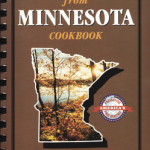By Diane Booth, U of M Extension Programs Coordinator
I recently spent two days at a Home Insect Control workshop led by Jeff Hahn, associate professor and extension educator. We learned some really cool things like–there are 11 common ant species in Minnesota; termites occur only in a few counties in the southern third of Minnesota; and the most common spider bite you might encounter in northeastern Minnesota would probably be from a yellow sac spider.
Learning how to ‘shake’ down your motel room to find out if you have German cockroaches or bedbugs present probably wasn’t the greatest topic of the day to finish up with as we all headed out to find overnight accommodations. However, I can guarantee you that everyone practiced that maneuver before going to sleep and probably aced the question on our follow up test.
Insect home invaders during the late summer and fall are interesting creatures. Many of them are really not harmful but fall into the category of nuisance insects. You may find some strawberry root weevils still hanging around your sinks or where moisture may occur. They are ¼-inch-long little brownish to black insects with a distinctive head and long snout. Just gently remove them outdoors or vacuum them up.
Earwigs are very distinctive creatures about 5/8-inch long, are reddish-brown with short wings. They also have very distinctive pinchers on the end of their abdomen. The males have curved pinchers while the females have straight pinchers. You find them in damp areas. They are considered to be scavengers and will often enter into buildings especially if you have lots of organic matter or mulch along your building. Gently herd them outdoors where they belong. They look scary, but truly are not harmful.
Larder beetles are a common sight this year in homes. The adults are ¼ to 1/3 inch long, a dark brown with a cream-colored band across the top of their wing covers, and they like high-protein foods. Known foods include animal hides, furs, feathers, meat, cheese, dry pet foods, dead insect or animal carcasses. The larvae are up to ½ inch long, wormlike, fairly hairy, dark brown in color and appear banded. They have a pair of spines on their tail end that curve backwards. Oftentimes they appear in numbers if you have many cluster flies, dead lady beetles or rodents in your walls. Finding their food source and removing it is the best way to get rid of this nuisance pest.
Did you just build a new home? Foreign grain beetles can be associated with new construction. They feed on mold or fungus that can come from wet sheetrock. Windows left open to air out the home allow the grain beetles to enter through ordinary window screens. They are small, 1/16 to 1/8 inch long, reddish brown in color and fairly flattened. Usually once the moisture disappears and mold and fungus is no longer available, they also disappear.
Millipedes and sowbugs are associated with high moisture needs. A damp basement, decaying vegetation such as under leaves, garbage sacks, etc are favorite places. Millipedes are wormlike, with 30 to 90 pairs of legs–usually two per segment. In the fall mass migrations can occur if the conditions are just right. If they wander into your home, just vacuum them up. Sowbugs are about ¾ inch long, gray and look kind of turtle like. Usually if they have come into your home they are unable to survive very long because of dry conditions. Simply remove these little terrestrial crustaceans back to the outdoors where they belong.
Fall wouldn’t be the same without the cluster flies we see coming into our homes in the fall and reminding us of their presence on our windows during warm winter days. Cluster flies are a small, 3/8-inch-long, gray-colored fly with yellow wavy hairs on their thorax. Adults overwinter together in ‘clusters’ in sheltered areas–like inside your house. In the spring, they lay eggs outside in soil cracks. The larvae are parasites on earthworms. The best way to keep the adults out of your home is to make sure all your cracks and openings are caulked or screened. If they do become a nuisance, you can easily vacuum them up as they seek light and congregate along your windows or indoor lights.
The multicolored Asian lady beetle is a fairly newcomer to Cook County. Found inside just before Halloween it has been nicknamed the ‘Halloween lady beetle.’ These ‘ladybugs’ can be distinguished by a black ‘M’ behind their head, however the number of spots and coloring varies. They do not reproduce indoors. Once again, vacuuming them up is the best solution. Swatting or crushing them will cause their joints to emit a fluid that can stain walls and furniture. This ‘reflex bleeding’ can also cause an allergic reaction in some folks. Occasional reports of slight biting have also been reported.
Note: For more information on insect pests found in or around your home, please contact the U of M Extension Service, Cook County office at (218) 387-3015.




